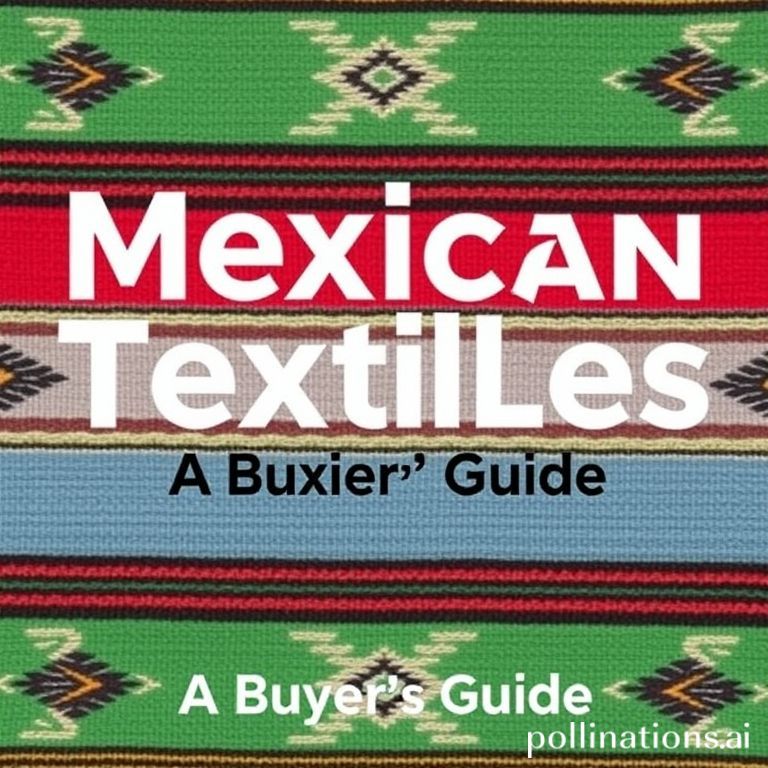Mexico’s vibrant culture is beautifully expressed through its textiles. From the intricate embroidery of a huipil to the bold stripes of a sarape, these handcrafted pieces are more than just fabric; they’re stories woven in thread. For travelers and art enthusiasts, acquiring authentic Mexican textiles is a cherished experience. This guide will help you navigate the world of Mexican textiles, ensuring you find beautiful, high-quality pieces while supporting local artisans.
Whether you’re looking for a unique souvenir, a stunning piece of decor, or a wearable work of art, understanding the different types of textiles and where to find them is key. Let’s explore the fascinating world of Mexican textiles and how to bring a piece of this rich heritage home with you.
Understanding Mexican Textiles
Mexican textiles are diverse, reflecting the country’s regional cultures and indigenous traditions. Each region boasts unique techniques, materials, and designs passed down through generations. Before you start shopping, familiarize yourself with some of the most popular types of textiles:
Huipiles: Woven Stories
The huipil is a traditional tunic worn by indigenous women across Mexico and Central America. These garments are often heavily embroidered or brocaded with symbols that represent the wearer’s community, marital status, and personal beliefs. The designs can be incredibly intricate and time-consuming to create, making each huipil a unique piece of art. When buying a huipil, look for fine stitching, vibrant colors, and meaningful designs.
Sarapes: Warmth and Style
The sarape is a long, blanket-like shawl, often made of wool and featuring bold, colorful stripes. Traditionally worn by men, sarapes are now popular as decorative throws, wall hangings, and even fashion accessories. The town of Saltillo in Coahuila is particularly famous for its sarapes, known for their intricate diamond patterns. When buying a sarape, consider the weight and quality of the wool, as well as the complexity of the design.
Rebozos: Versatile Shawls
The rebozo is a long, rectangular shawl traditionally worn by women in Mexico. It’s incredibly versatile, used as a head covering, a baby carrier, or simply as a stylish accessory. Rebozos come in a variety of materials, including cotton, silk, and wool, and often feature intricate fringe detailing. The town of Santa María del Río in San Luis Potosí is renowned for its fine silk rebozos. A quality rebozo should have a tight weave, even fringe, and a soft, comfortable feel.
Embroidery: Regional Specialties
Embroidery is a common feature across many types of Mexican textiles. Different regions have their own distinctive embroidery styles. For example:
- Tenango Embroidery (Hidalgo): Known for its whimsical, colorful animal and plant motifs.
- San Antonino Embroidery (Oaxaca): Features intricate floral and geometric designs.
- Chiapaneca Embroidery (Chiapas): Characterized by bold floral patterns and vibrant colors.
When buying embroidered textiles, look for neat, even stitches and high-quality thread.
Where to Buy Authentic Mexican Textiles
Finding authentic, ethically sourced Mexican textiles is essential. Here are some tips on where to shop:
Local Markets
Visiting local markets is a fantastic way to experience the vibrant culture of Mexico and find unique textiles directly from the artisans. Be prepared to haggle respectfully, and remember that the prices reflect the time and skill that went into creating the piece. Popular markets include:
- Mercado de Artesanías La Ciudadela (Mexico City): A large, bustling market with a wide variety of textiles from across the country.
- Mercado 20 de Noviembre (Oaxaca City): Famous for its regional textiles, including huipiles, rebozos, and rugs.
- San Cristobal de las Casas Market (Chiapas): Offers a wide array of textiles produced by local indigenous communities.
Artisan Cooperatives
Supporting artisan cooperatives ensures that the artisans receive fair wages and that traditional techniques are preserved. Many cooperatives have their own stores or sell their products online. Look for organizations that are committed to ethical sourcing and fair trade practices.
Specialty Shops
In tourist areas, you’ll find specialty shops that curate high-quality Mexican textiles. These shops often work directly with artisans and can provide more information about the origin and history of the pieces they sell. While prices may be higher than in the markets, you can be assured of the quality and authenticity of the textiles.
Tips for Buying Mexican Textiles
Here are some helpful tips to keep in mind when buying Mexican textiles:
- Do your research: Learn about the different types of textiles and regional styles before you go shopping.
- Inspect the quality: Check for even stitching, high-quality materials, and durable construction.
- Ask questions: Talk to the artisans and vendors about the origin and history of the textiles.
- Negotiate respectfully: Haggle politely, but remember that the prices reflect the value of the craftsmanship.
- Support fair trade: Look for products that are ethically sourced and that support local artisans.
Conclusion
Buying Mexican textiles is more than just acquiring a beautiful object; it’s an investment in preserving cultural heritage and supporting local communities. By understanding the different types of textiles, knowing where to shop, and following these tips, you can find unique, high-quality pieces that will bring joy and beauty to your home for years to come. Enjoy the experience of discovering these woven treasures and the stories they tell.
If you enjoyed this article, don’t forget to explore more inspiring stories on Life in Mexico!
IMAGE: A brightly lit, colorful stall in a Mexican market overflowing with textiles. Huipiles with intricate embroidery, serapes with bold stripes, and rebozos with delicate fringe are all displayed. Focus on the detail and craftsmanship. The mood is lively and inviting, capturing the essence of Mexican artistry.


